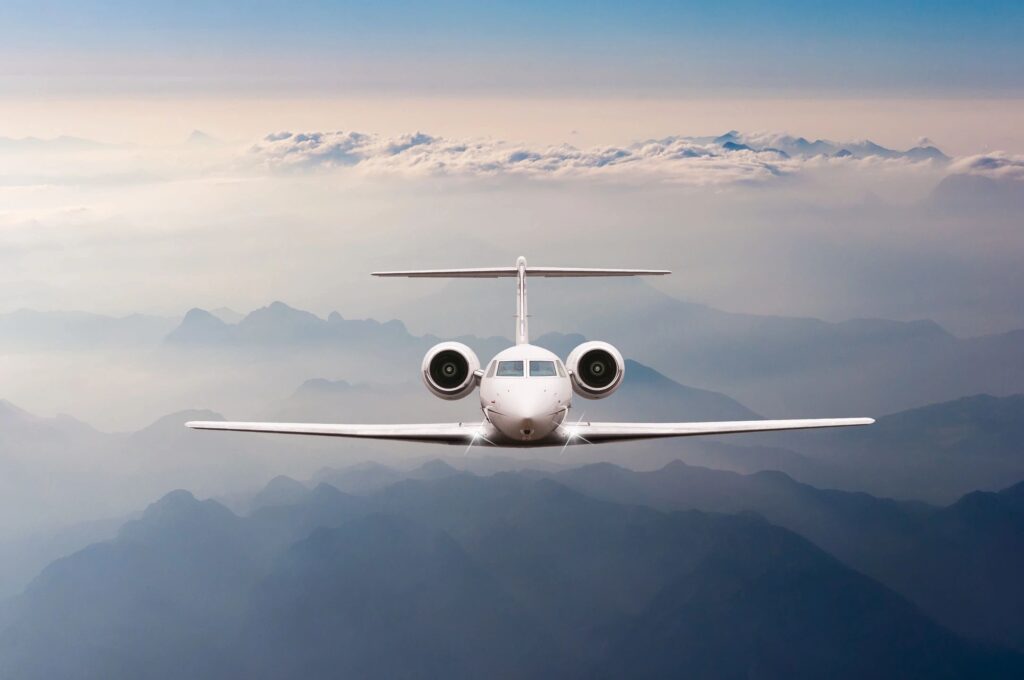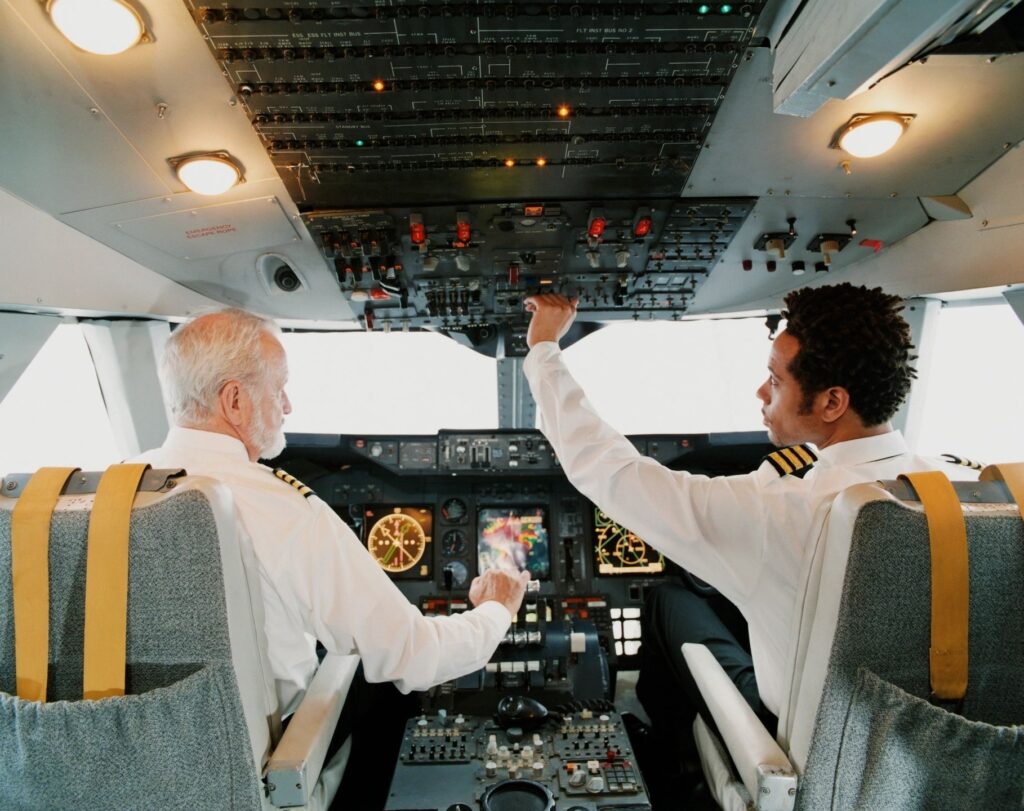During a flight, pilots encounter a variety of turbulence. Understanding turbulence on an airplane can help you respond more effectively on a flight to your vacation destination.
What is turbulence, exactly?
Turbulence is a nuisance for most passengers. Airflow is suddenly and violently shifted by turbulence. An uneven atmospheric motion causes it to generate up and down currents. This abrupt jerking you experience on an airplane is described as “turbulence.”
What is the root cause of this?-Turbulence on an Airplane
Numerous factors might generate turbulence, including wind, storms, the jet stream, and even mountains close to the plane. There is no way to predict or observe this occurrence on a map, and it can occur anywhere from the ground up to any flight altitude.
When there is turbulence, what happens?-Turbulence on an Airplane
Students of aviation are taught that air is a liquid. Air is measurable and has a mass. An airplane encounters turbulent air when flying over waves of irregular or violent air that cause the aircraft to yaw, pitch, or roll as a result. Turbulence may be compared to the collision of two seas. In a crash, the waves and currents in both seas will grow much more significantly. The usage of a turbulence tracker or forecasting tool is common among pilots. These do not indicate where turbulence is likely to occur. Instead, they point out areas where turbulence is most likely to occur. Flyers must prepare for the unexpected because nothing can be planned for.
Is there a difference between the many types of turbulence?

When an airplane travels through the air, wake turbulence builds behind it, causing wingtip vortices. Up to three minutes after an aircraft passes, these vortices can still be seen in the sky or on the ground. The most vital vortex strength when producing aircraft is HEAVY, CLEAN, and SLOW.
At altitudes over 15,000 feet MSL, clear air turbulence (CAT) is created by severe jet stream wind shears.
Temperature turbulence is caused by pockets of warm air that ascend before descending when the temperature drops. The atmosphere’s temperature generally drops with an elevation under typical climatic circumstances. Temperature inversion turbulence occurs when inverted cases and chilly air is trapped behind a thin, heated layer. There is a lot of turbulence at the warm layer’s perimeter.
When the air near the Earth’s surface rushes over barriers, such as hills, mountains, or buildings, mechanical turbulence is generated. The typical horizontal wind flow disruption causes swirls and irregular air movements.
The sudden wind shift between warm and cool air masses causes frontal turbulence. Fast-moving cold fronts exacerbate this form of turbulence. A flow with strong air current waves changing at all altitudes can form when the air flowing over the tops of mountains travels down the leeward side. When mountains are in the way, turbulence may get felt hundreds of kilometers away. A storm cloud is the visible element of a thunderstorm’s turbulent system. Severe turbulence can reach as far as 15 to 30 miles from the center of the storm in the form of updrafts and downdrafts.
What are the consequences?-Turbulence on an Airplane
Turbulence may cause a plane to dip or change altitude abruptly. It is why pilots usually urge passengers to buckle up and stay seated when experiencing flight turbulence. Passengers are put in danger by unexpected movements.
How do airlines deal with this issue?
Turbulence is a source of anxiety for many people who fly commercially. Fears of a crash arise when the intensity level is too high. Captains often make announcements to comfort passengers when conditions are poor. Passengers might feel more at ease if the issue is explained to them. It is something pilots learn to deal with while in flight school. Using a simulator, they may generate tricky situations. They are better prepared for the real world with work like this. When faced with sudden and unexpected fluctuations in flow velocity, pilots commonly submit a report (PIREP) to share their experience with other pilots.
Pilots may avoid turbulence in several ways.
One of the most significant ways to avoid turbulence is to know what causes it. It’s vital to be familiar with the many forms of turbulence. As you gain experience and proficiency as a pilot, you can minimize your chances of flying into turbulence. Understanding how and where turbulence originates, as well as the procedures for an aircraft, may help you anticipate it and be ready to respond when it does. I, too, can attest to the terrifying force of turbulence.
Turbulence is a “rough patch” created by wind, thunderstorms, the jet stream, closeness to mountains, and other circumstances, notwithstanding the discomfort and terror it inflicts. An unexpected pothole on the road or a summer rain can be a surprise foe for travelers, but they’re so prevalent that we tell ourselves, “This, too, shall pass.” Stories like this, though, nevertheless make us squirm. Turbulence prompted an emergency landing in Nevada in February, sending three Delta passengers to the hospital, as reported by NBC. Turbulence from another aircraft caused a “nosedive” in June 2018 for a Qantas airliner. There’s also this endearing video of a jet being “brought to its boundaries” as it descends.
It’s scary, but don’t cancel your next trip just yet. Pilots and aviation specialists were interviewed to learn more about turbulence-related injuries and what happens when your plane is jerking violently in mid-air. It does not imply that the aircraft is about to go down.
Turbulence is often harmless.
Even while turbulence is widespread and usually harmless, it doesn’t make it easier to deal with in the air and the moment. Some turbulence is created by thunderstorms, while others are caused by quickly changing wind speed or direction. There are varying degrees and forms of this turbulence. (I’ll get to it in a minute.)
Injuries caused by turbulence are rare, although they do occur-Turbulence on an Airplane
According to the FAA, turbulence causes the injuries of 58 passengers per year. Two-thirds of those people are flight attendants or passengers who weren’t wearing seat belts when the bumps struck; that’s 20 people out of the 800 million people who travel in the United States each year who are hurt because of turbulence. And it’s generally at or above 30,000 feet that this occurs.
When it happens, pilots know precisely when.
Pilots can turn on the seatbelt indicator in many circumstances as the jet nears turbulence, allowing passengers to buckle up. Pre-flight weather information, cockpit radar, and reports from other planes in the region all assist pilots in their work.
A different scenario is turbulence in clear air-Turbulence on an Airplane
It is the deadliest type of turbulence; weather radar cannot detect impending turmoil as it occurs under clear skies with excellent visibility. It means the flight crew has extraordinarily little time to provide the last warning to passengers to get back to their seats and fasten their seat belts. Clear air turbulence is responsible for the majority of turbulence-related injuries.
Air turbulence is increasing invisibility.
Climate change is expected to generate more than a twofold increase in the quantity of intense, clear air turbulence that affects airplanes by the middle of the century. So, prepare yourself for a bumpier ride ahead of you.
Your plane won’t go down because of turbulence, either.
Independent of how bad the turbulence is, the plane’s safety is rarely in doubt, despite how it may seem. “Planes are constructed to endure a tremendous amount of punishment,” says Patrick Smith, the author of the recently released book Cockpit Confidential and Ask the Pilot.
To deal with it, pilots get special training-Turbulence on an Airplane
To avoid turbulence during a flight, pilots meticulously research the weather patterns, prepare ahead, and select the optimal route. The excellent ones, like Sully Sullenberger, know how to calm nervous passengers when turbulence is unavoidable.
In general, observing the seat belt indicator is a clever idea.
The only foolproof approach to avoid turbulence-related injuries is always wearing your seat belt when the warning is lighted due to an increase in clear air turbulence. It’s simple, yet it works.
Car seats may get used on flights as well as on the ground-Turbulence on an Airplane
Turbulence-related injuries are most common in youngsters who ride in their parents’ lap. Using your hands violently may cause the child to fly from your grasp. Indeed, the tremendous shaking of the airplane displaced an infant girl from her parents’ lap on a United trip, and she fell on another passenger several seats away. Infants should be secured into an airline-approved car seat by the National Transportation Safety Board.
Shortly, we may no longer have to deal with turbulence.
Turbulence may get avoided entirely by employing ultraviolet lasers to deliver pulses of light into the air ahead of the plane.
However, there are a plethora of things you can do in the meanwhile.
“I bounce in my seat without connection to the structure of the plane, or objects fastened to it, and the sharper jolts of turbulence feel less harsh,” writes Cynthia Drescher in her Traveler piece on the subject. “Disrupt Your Thoughts” is another suggestion from Captain Ron Nielsen, a 40-year veteran of the aviation business and instructor of fear of flying classes “Write your name with a pen in the opposite hand from the one you typically use,” he advised. “Because she doesn’t regularly write with her other hand, [the passenger] is forced to pay additional attention to what she is doing. First of all, it’s crossing over her motor function in her brain, using the other side of her brain from what she would ordinarily do.”
Recommended Reads
- Review for Air China
- What Does Airbnb Mean? The Travel Virgin Explains 2021
- Climate for Tropical Rainforest: All You Need to Know
- Climate Variability and Climate Change- What is the Difference?


